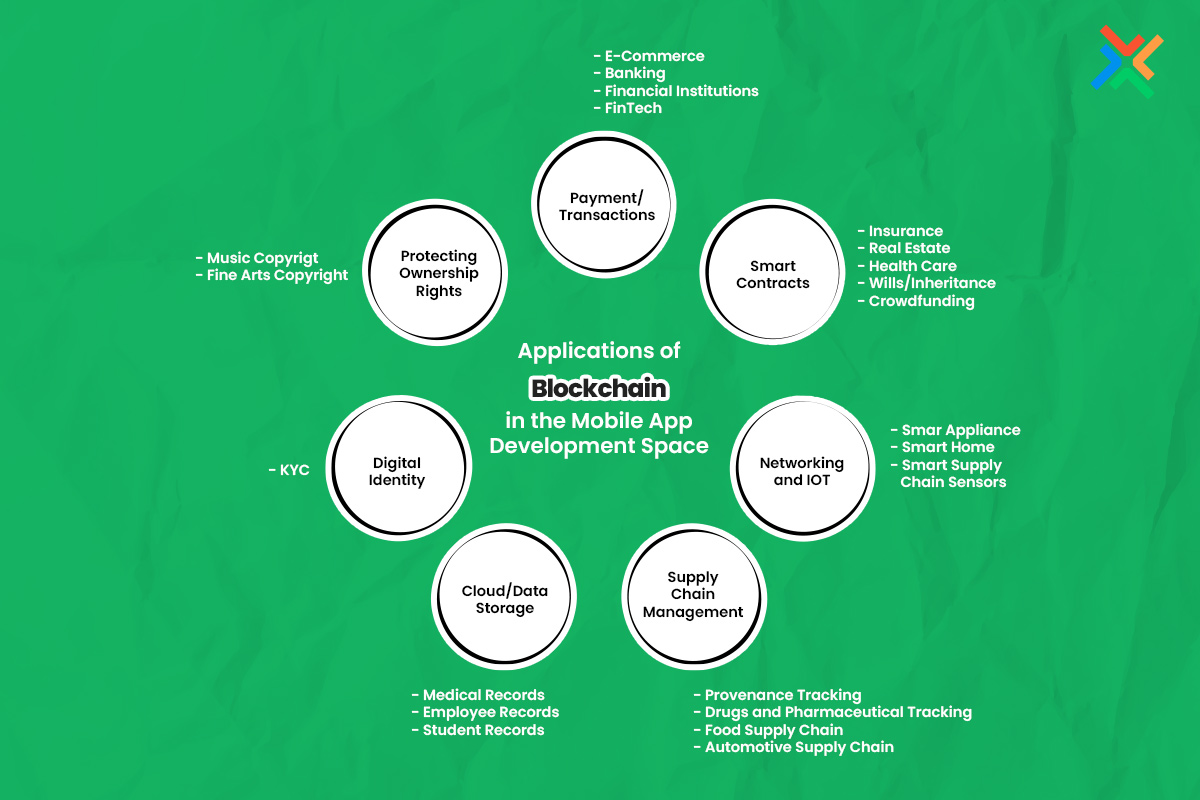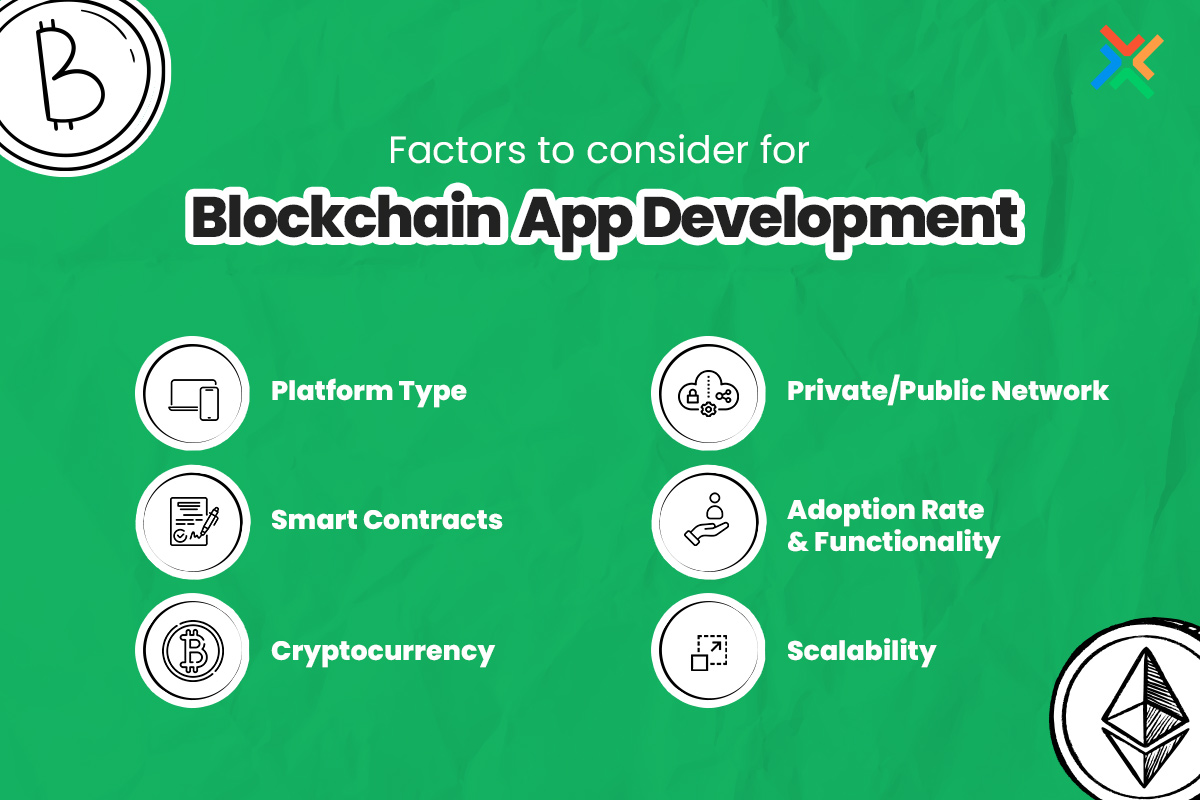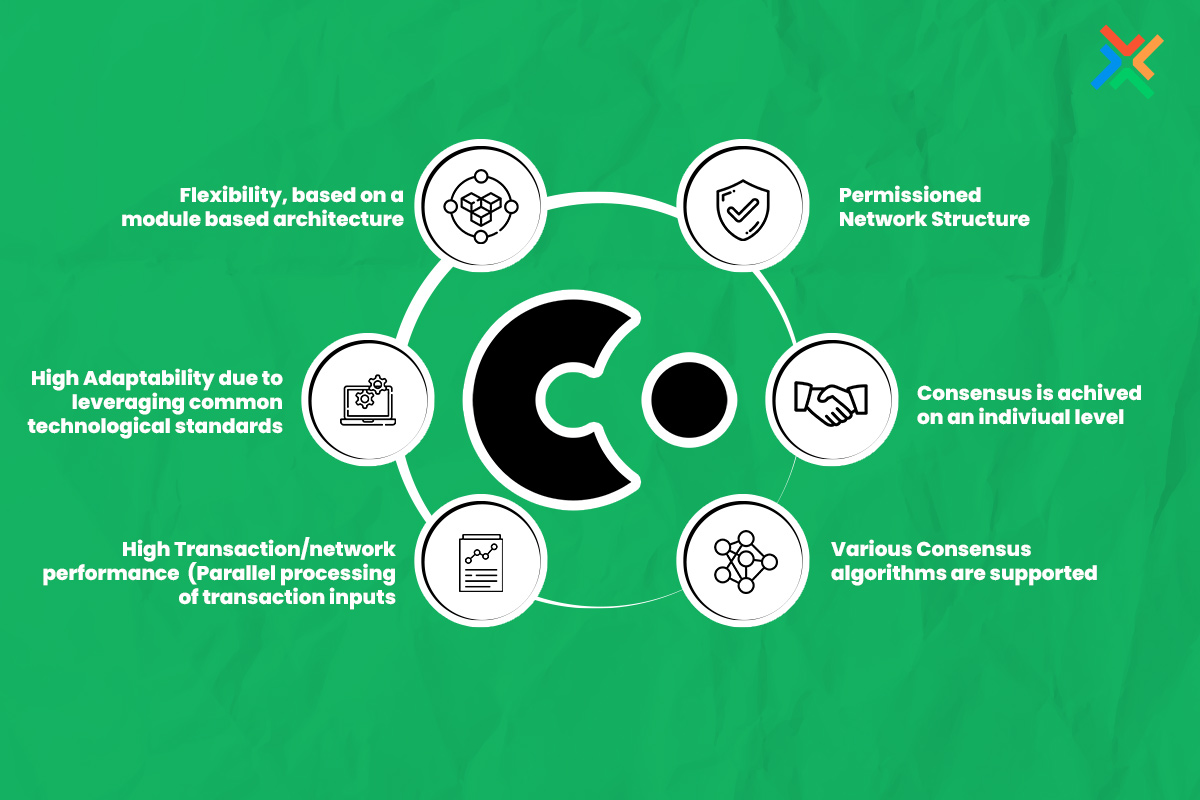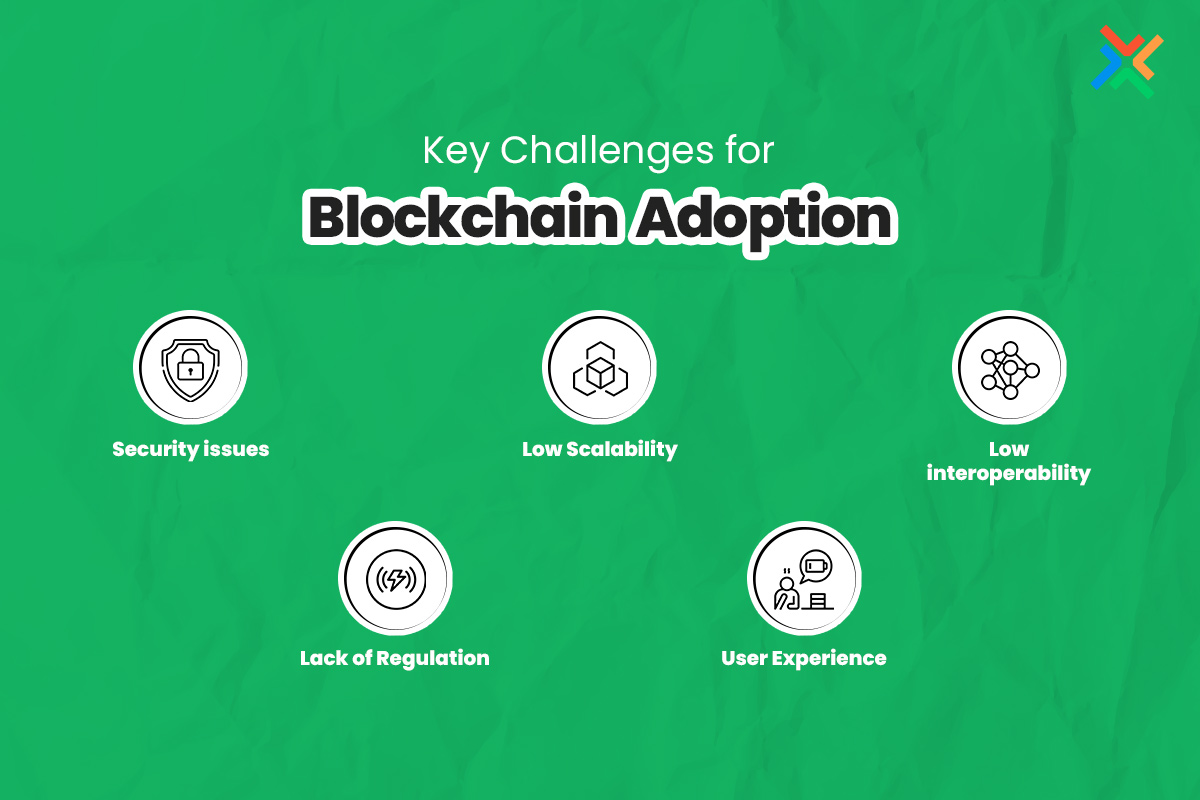How Blockchain is Transforming Mobile App Development in 2024
January 12, 2024

Vivek Adatia

Mobile app development is a dynamic and competitive field that requires constant innovation and adaptation to the changing needs and preferences of the users. Mobile app developers face various challenges and opportunities in creating secure, user-friendly, and high-quality applications that can stand out in the crowded market. One of the emerging technologies that can help mobile app developers overcome these challenges and create new possibilities is blockchain.
Blockchain has emerged as one of the most disruptive innovations of the 21st century. Security, transparency, and decentralized transactions are at the core of this technology and they empower it with the potential to transform numerous industries, including finance, healthcare, supply chain, education, etc.

What is Blockchain and Why Should You Care?
Blockchain is a technology that allows storing and transferring data in a decentralized, distributed, and immutable way. A blockchain consists of a chain of blocks, each containing a set of transactions that are verified and validated by a network of nodes. Each block is linked to the previous one by a cryptographic hash, making it impossible to alter or delete any data once it is recorded on the blockchain.
Blockchain technology offers several advantages for mobile app development, such as:
Security: Blockchain uses encryption and consensus mechanisms to ensure that only authorized parties can access and modify the data. It eliminates the need for intermediaries or central authorities, reducing the risk of data breaches,
fraud, or corruption.
Transparency: Blockchain provides a public and verifiable record of all transactions that occur on the network. This enhances the trust and accountability among the users and the developers of the mobile apps.
Efficiency: Blockchain facilitates faster and cheaper transactions, as it does not require intermediaries or third-party services. It reduces the complexity and redundancy of the data, improving the performance and scalability of mobile apps.
Scalability: Blockchain can handle a large number of transactions and users, as it is distributed across multiple nodes. It allows for interoperability and integration with other technologies and platforms, expanding the functionality and reach of mobile apps.
The Growth and Adoption of Blockchain in the Mobile App Industry
Blockchain technology is becoming increasingly popular and widely adopted in the mobile app industry. According to a report by Statista, global blockchain solutions spending is expected to reach $20 billion by 2024, with a compound annual growth rate (CAGR) of 60.2% from 2020 to 2024. Another report by Grand View Research estimates that the global blockchain technology market size is projected to expand at a CAGR of 82.4% from 2021 to 2028.
The mobile app industry is one of the key sectors that is leveraging the potential of blockchain technology. Based on the DappRadar Report, as of November 2023, there are 3.4 million daily Unique Active Wallets (dUAW). The number of blockchain mobile apps is growing rapidly, as more and more developers are using blockchain to create innovative and secure solutions for various domains.
Blockchain Development Frameworks for 2024
Blockchain app development frameworks are tools that simplify the process of creating decentralized applications (DApps) on the blockchain. However, building a blockchain app from scratch can be challenging and time-consuming, as it requires a high level of technical expertise and knowledge of the underlying blockchain protocols and architectures. Blockchain development frameworks provide a set of features and functionalities that can help developers create, test, deploy, and manage DApps more easily and efficiently. Some of the common features of blockchain development frameworks are:
- Programming languages and libraries that allow developers to write smart contracts and DApp logic in a familiar and convenient way.
- Testing and debugging tools that help developers verify and optimize the performance and functionality of their DApps.
- Deployment and management tools that help developers launch and update their DApps on the blockchain network.
- Integration and interoperability tools that help developers connect and interact with other DApps, platforms, and services.
Blockchain development frameworks can also offer specific features and advantages for different types of blockchains, such as public, private, or hybrid. For example, some frameworks may support multiple consensus algorithms, privacy and permission mechanisms, or cross-chain communication.
Choosing the Best Blockchain Development Framework
Blockchain development companies in the UAE can choose from several frameworks available in the market, each with its own pros and cons. Choosing the best framework for your DApp project depends on the following factors:
- The type and purpose of your DApp
- The target audience and market of your DApp
- The technical requirements and specifications of your DApp
- The budget and timeline of your DApp project
- The availability and compatibility of the framework with your preferred programming language, platform, and tools

To help you make an informed decision, we will compare and contrast some of the most popular and widely used blockchain development frameworks, which include:
Ethereum
- Hyperledger Fabric
- Hyperledger Sawtooth
- EOSIO
- Corda
- Quorum
- Ethereum
Ethereum is a public, open-source, and decentralized blockchain platform that supports smart contracts and DApps. Smart contracts are self-executing agreements that are written in code and run on the blockchain and DApps use smart contracts to provide various services and functions to users.
Ethereum offers several features and advantages for mobile development.
- A large and active community of developers and users that provide support, feedback, and innovation.
- A native cryptocurrency called Ether (ETH) that can be used to pay for transactions and services on the network.
- A flexible and Turning-Complete programming language called Solidity that allows developers to write complex and customized smart contracts and dApps.
- A variety of tools and frameworks that can help developers create, test, deploy, and manage DApps, such as Truffle Suite, Remix, Ganache, and MetaMask.
- A high level of interoperability and compatibility with other blockchain platforms and protocols, such as ERC-20, ERC-721, and EIP-1559.
However, there are a few challenges and limitations that need to be considered. For instance, the network suffers from low scalability and high congestion, resulting in slow and expensive transactions. However, there are various scaling solutions that address this particular limitation, which include Arbitrum, Optimism, and Zero-Knowledge Proofs.
The learning curve and technical complexity of developing and deploying dApps on Ethereum are high as well. Furthermore, a lack of standardization and regulation of the dApp ecosystem, in addition to the high volatility and unpredictability of Ether prices can affect the security, profitability, and sustainability of the dApps.
Some of the examples of successful DApps built on Ethereum are:
- CryptoKitties: A collectible and breedable game that allows users to create and trade digital cats on the blockchain.
- Uniswap: A decentralized exchange that allows users to swap any ERC-20 tokens without intermediaries or fees.
- MakerDAO: A decentralized lending platform that allows users to borrow and lend stablecoins pegged to the US dollar.
- Decentraland: A virtual reality platform that allows users to create and explore digital worlds on the blockchain.
Hyperledger Fabric
Hyperledger Fabric is a private, permissioned, and modular blockchain platform that supports smart contracts and DApps. Hyperledger Fabric is part of the Hyperledger project, which is a collaborative effort by the Linux Foundation and various industry partners to create open-source blockchain solutions for enterprise use cases.
Noteworthy features and benefits of Hyperledger Fabric include:
- A high scalability and performance of the network that can handle thousands of transactions per second.
- A flexible and pluggable architecture that allows developers to customize the components and parameters of the network, such as consensus algorithm, membership service, and data storage.
- A rich and diverse programming language support that allows developers to write smart contracts and DApps in various languages, such as Java, Go, Node.js, and Python.
- A robust and secure permission system that allows developers to control the access and visibility of the data and transactions on the network.
- A strong and reliable governance and compliance framework that ensures the quality and integrity of the DApps.

Hyperledger Fabric encounters challenges in mobile app development due to its intricate network setup, demanding significant resources and expertise. The platform exhibits limited compatibility with other blockchain protocols, constraining decentralized application (DApp) functionality and outreach. Moreover, the absence of a native cryptocurrency and incentive system impacts user and blockchain apps developer motivation. Additionally, Hyperledger Fabric's focus on enterprise and business use cases results in a confined market and audience for DApps.
Some of the examples of successful DApps built on Hyperledger Fabric are:
- TradeLens: A global trade platform that allows stakeholders to track and share information about the shipment and delivery of goods on the blockchain.
- Food Trust: A food traceability platform that allows participants to monitor and verify the origin and quality of food products on the blockchain.
- World Wire: A cross-border payment platform that allows financial institutions to transfer and settle payments in multiple currencies on the blockchain.
- MyClinic: A healthcare platform that allows patients and doctors to access and share medical records and prescriptions on the blockchain.
Another Hyperledger project is the Hyperledger Sawtooth, which focuses on scalability and flexibility across industries. It introduces the innovative Proof of Elapsed Time (PoET) consensus algorithm for high throughput and energy efficiency. The platform's modular design allows developers to easily customize components like transaction families, consensus engines, and smart contract languages. Offering versatile programming language support (C++, Rust, Python, JavaScript) and a dynamic permission system, Sawtooth accommodates both public and private network modes based on user preferences.
EOSIO
EOSIO, like Ethereum, is an open-source, and decentralized blockchain platform. It aims to provide a scalable and user-friendly solution for Web3 app development for various domains and sectors.
EOSIO’s notable features and advantages include:
- Ability to handle millions of transactions per second.
- A native cryptocurrency called EOS that can be used to pay for transactions and services on the network.
- A powerful and expressive programming language called C++ for developers to code smart contracts and DApps.
- Tools and frameworks such as EOSIO SDK, EOS Studio, and EOSIO Explorer.
- A high level of usability and accessibility of the network that allows users to create and use accounts and DApps without fees or friction.
However, EOSIO faces concerns about low network security and reliability, making it susceptible to hacks and attacks. The platform presents a steep learning curve and technical complexity for DApp development and deployment. Additionally, the lack of standardization and regulatory frameworks in the DApp ecosystem raises security and legal risks, while a high degree of centralization and network concentration can impact trust and fairness within DApps.
EOSIO has seen success with various DApps. Examples include:
- Everipedia: A decentralized encyclopedia that allows users to create and edit articles on the blockchain.
- Voice: A social media platform that allows users to create and share content on the blockchain.
- Upland: A virtual property trading game that allows users to buy and sell digital real estate on the blockchain.
- EOS Knights: A role-playing game that allows users to collect and trade digital items and characters on the blockchain.
Alongside the ones mentioned above, other popular blockchain frameworks for mobile app development include:
Corda: It is a private platform tailored for enterprises, particularly in finance. It prioritizes privacy and security, offering a native cryptocurrency (XRP) and flexible language support. Despite challenges like scalability issues, Corda boasts successful DApps like TradeIX, Spunta Banca DLT, HQLAx, and Contour, enhancing trade finance, interbank reconciliation, securities lending, and digitized trade processes.

Quorum: It is derived from Ethereum and targets enterprise applications. Emphasizing privacy and security, Quorum utilizes its native cryptocurrency (Quorum Token) and supports Solidity for smart contracts. While facing scalability concerns, Quorum exhibits strong interoperability with platforms like Ethereum and Hyperledger. Successful DApps on Quorum include JPM Coin, Covantis, Komgo, and Clearmatics, offering solutions for digital currency, global trade, trade finance, and decentralized market infrastructures.
Blockchain Trends and Challenges for Mobile App Development
As more and more developers and users embrace blockchain for creating and using mobile apps, new trends, and challenges emerge that shape the future of this domain. Some of the most prominent and influential trends and challenges of
blockchain for mobile app development are:

Interoperability:
Interoperability is about different blockchain platforms and protocols communicating and exchanging data and value. It enhances the functionality and reach of mobile apps by allowing access to resources and services of multiple blockchain networks. However, it poses a few technical and operational challenges, including compatibility, security, and governance issues.
Scalability:
Scalability is the ability of a blockchain network to handle a large number of transactions and users without compromising performance and security. It ensures a smooth user experience, crucial for high-demand applications. Challenges include throughput, latency, and cost issues.
Regulation:
Regulation involves rules and standards governing the use and development of blockchain technology and its applications. It affects the legal and ethical aspects of mobile app development, defining rights, responsibilities, risks, and liabilities. There are a few uncertainties and limitations, which include jurisdiction, enforcement, and innovation issues.
Adoption:
Adoption is the acceptance and usage of blockchain technology and its applications by the target market and audience. It determines demand and value, impacting the profitability and sustainability of mobile app development. The few prevalent barriers include concerns related to awareness, education, and trust.
User Experience:
User Experience is about the satisfaction and enjoyment of users when interacting with a mobile app. It influences user behavior and app loyalty. However, it also poses some difficulties and challenges, such as usability, accessibility, and feedback issues.
These trends and challenges are pivotal but aren’t exhaustive. As technology and the industry evolve, constant monitoring and adaptation by developers and stakeholders will be crucial.
Strategies and Practices for Overcoming Challenges and Leveraging Trends
- Collaboration:
Collaboration can help to address and solve the interoperability, regulation, and adoption challenges, as well as to exploit and enhance the scalability and user experience trends. For example, blockchain app developers can collaborate with other developers, platforms, and protocols to create cross-chain and multi-chain solutions, or with regulators, policymakers, and industry associations to create common standards and frameworks, or with users, customers, and communities to create feedback and education mechanisms.
- Innovation:
Developers can innovate with new and improved consensus algorithms, smart contract languages, and DApp frameworks, or with new and improved use cases, features, and functions, or with new and improved design, interface, and content.
- Optimization:
Improving and enhancing the performance and quality of the development and usage of blockchain technology can help optimize the transaction throughput, enhance platform security, and improve user interface.
Recommendations and Best Practices for Integrating Blockchain into Mobile App Development:
- Choose the right blockchain platform and protocol for your mobile app project, based on your technical requirements, specifications, preferences, market, and audience needs.
- Use appropriate frameworks considering the preferred programming language, platform, tool, available features, and functionalities.
- Follow the relevant laws and regulations for your mobile app project, based on your target domain, sector, and region, as well as the potential risks and liabilities.
- Follow relevant laws and regulations based on the target domain, sector, region, potential risks, and liabilities. For instance, ensure compliance with laws and regulations like KYC, AML, GDPR, and HIPAA.
- Test and debug your mobile app project thoroughly and regularly, based on your performance and quality standards and goals, as well as the feedback and suggestions from the users and the stakeholders.
- Execute a strategic launch and updates considering market and audience analysis, segmentation, industry trends, and opportunities.
Conclusion
Blockchain technology is not a passing trend or a hype, but rather a fundamental and disruptive innovation that can revolutionize the mobile app industry. By integrating it into mobile app development, you can create more value and impact for your mobile app project, as well as for your target market and audience. You can also gain a competitive edge and a strategic advantage in the mobile app industry, as well as in the broader digital economy.
At WDCS, we recognize the potential of blockchain in reshaping the mobile app development domain. Our commitment as a trusted provider of blockchain development services in UAE to staying at the forefront of technological advancements allows us to offer innovative solutions. Whether you're a developer seeking the right blockchain framework or a business aiming to integrate blockchain into your mobile app strategy, we're here to guide you. Contact us today to explore our blockchain solutions for mobile app development or hire expert blockchain developers in UAE.
Tap into the incredible benefits of blockchain technology for your mobile app
Blockchain has the potential to take your mobile app to the next level. At WDCS, we can integrate the technology into your mobile app, whether it is finance, gaming, or any other domain.